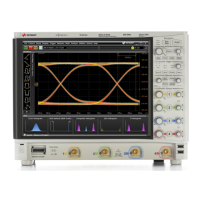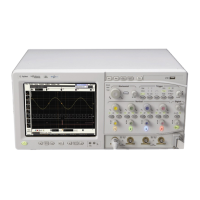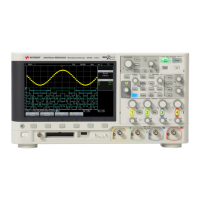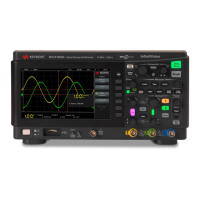36 S-Series Oscilloscopes Service Guide
3 Testing Performance
Procedure
1 Preset the power meter.
2 Ensure that the power sensor is disconnected from any source and zero the
meter.
3 Connect the power sensor to the power meter's Power Ref connector and
calibrate the meter.
4 Make the connections to oscilloscope channel 1 as shown in the preceding
connection diagram.
5 Set up the power meter to display measurements in units of Watts.
6 Click Control > Factory Default, then configure the oscilloscope as follows:
a Ensure the channel under test is displayed and all other channels are turned
off.
b In the Channel dialog box, set the vertical scale of the channel under test to
5 mV/div and the input impedance to 50 Ohms.
c Set the horizontal scale to 16 ns/div (to display 8 cycles of a 50 MHz
waveform).
d Click Setup > Acquisition... and ensure the acquisition parameters are set up
as follows:
Sin(x)/x Interpolation = Auto
Analog Averaging = Enabled with # of Averages set to 16 samples
Analog Memory Depth = Automatic
Analog Sampling rate = Maximum (select the Manual button and click the
up-arrow as high as it goes)
e Click Measure > Add Measurement....
f In the Add Measurement dialog box, click Vertical and RMS, and configure
the measurement as follows:
Source = Channel 1
Measurement Area = Entire Display
RMS Type = AC
7 Set the generator to apply a 50 MHz sine wave with a peak-to-peak amplitude
of about four divisions.
Use the following table to determine the approximate required signal
amplitude.
The amplitude values in the table are not absolutely required. If your generator
is unable to produce the recommended amplitude, then set the generator to
the highest value that does not produce a vertically clipped signal on the
oscilloscope.

